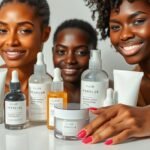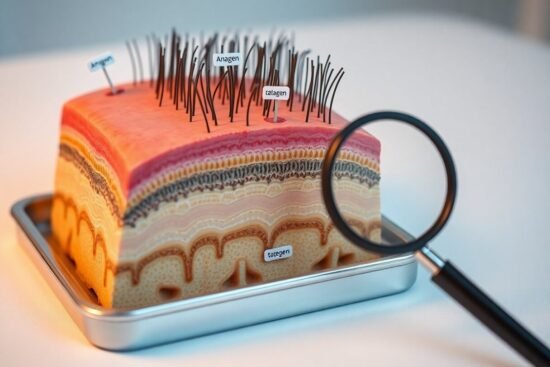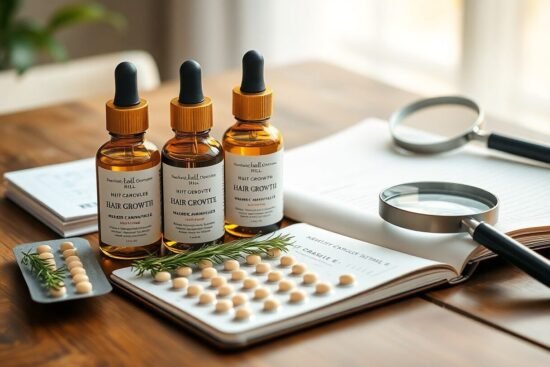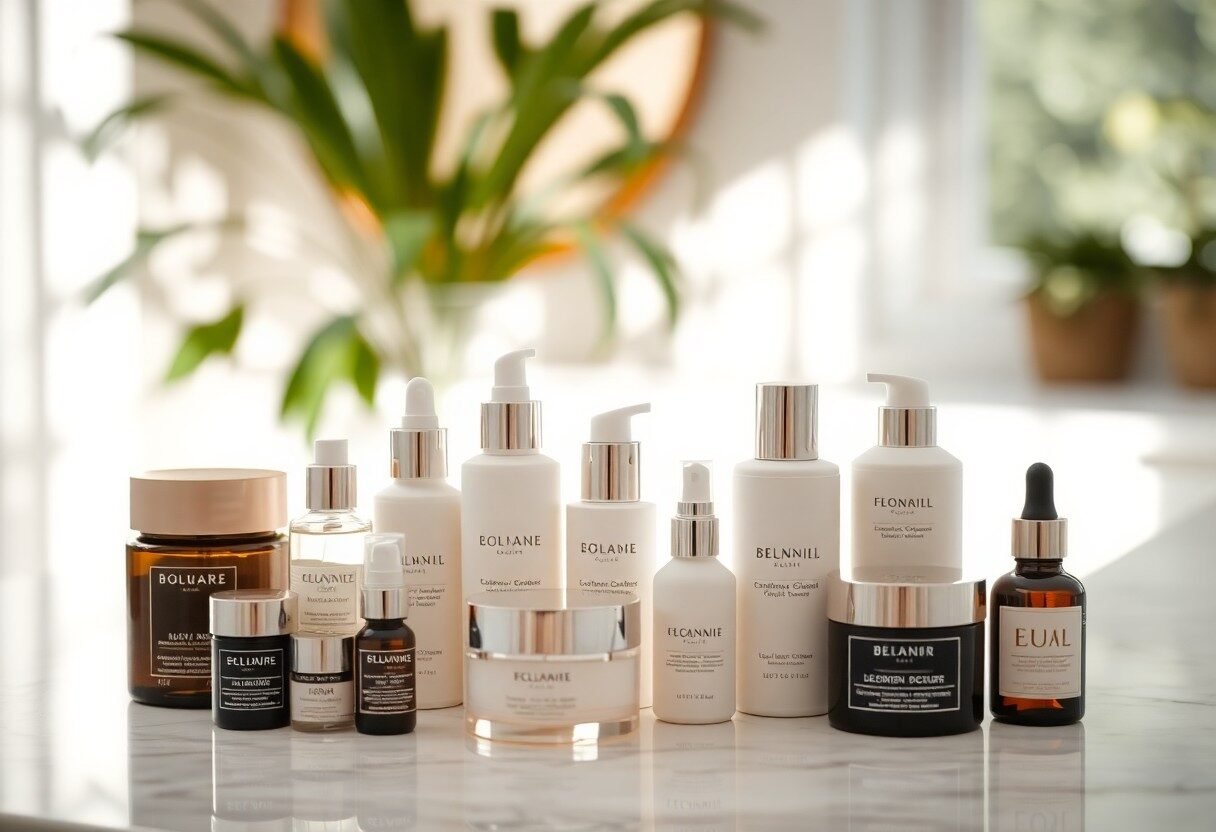
The Unseen Battle Against Dark Spots
The Causes Behind Dark Spots
Understanding the underlying causes of dark spots is vital for an effective skincare routine. Sun exposure is a primary contributor, as UV rays stimulate melanin production to protect the skin. Over time, this can lead to an overaccumulation of pigment in certain areas, creating those pesky spots.
But the sun isn’t the only perpetrator. Hormonal changes, particularly in women, can result in conditions like melasma, which is characterized by brown patches typically on the face. Additionally, wounds, acne scars, and even excessive use of certain skincare products can also cause discoloration.
Selecting Targeted Treatments
Finding the right products to tackle dark spots can feel overwhelming given the myriad of options available. Vitamin C serums are often hailed as a powerhouse ingredient due to their ability to brighten the skin and inhibit melanin production. In my experience, incorporating a potent 10-20% concentration has delivered noticeable results in a matter of weeks.
Another potent option is retinol. This derivative of Vitamin A aids in cellular turnover, allowing new, healthier skin to emerge while fading existing dark spots. Many dermatologists recommend starting with a lower concentration—around 0.25% to 0.5%—and gradually increasing as your skin builds tolerance.
The Role of Sun Protection
Daily sunscreen application is a non-negotiable step in any anti-dark spot strategy. Using a broad-spectrum sunscreen with at least SPF 30 protects against both UVA and UVB rays, which is vital to prevent new spots from forming and existing ones from darkening. I personally prefer mineral sunscreens containing zinc oxide or titanium dioxide, as they provide immediate protection and are typically less irritating for sensitive skin.
Integrating other ingredients can bolster your dark spot treatment. Niacinamide, for instance, has been shown to reduce the appearance of dark spots while improving skin texture and tone. The dual approach of lightening dark spots and enhancing overall skin health makes niacinamide a versatile addition to your routine.
Another noteworthy ingredient is licorice root extract, known for its skin-brightening properties. It can help reduce the visibility of pigmentation while also providing anti-inflammatory benefits, making it suitable for those with sensitive skin.
Your Personalized Approach
Every individual’s skin is unique, which means a tailored approach is vital in this ongoing battle against dark spots. I recommend consulting with a dermatologist who can evaluate your skin type and suggest the most appropriate treatments based on your specific concerns. Tracking progress over time can also provide valuable insight into which products work best for you.
With persistence and the right skincare arsenal, achieving a more even-toned complexion is within reach. Don’t hesitate to mix and match products to find a regimen that aligns with your skin’s specific needs, but remain patient—consistency is key in this journey.
Key Takeaways:
- Identify the type of dark spots you are dealing with, such as sunspots, post-inflammatory hyperpigmentation, or melasma, to select the most effective treatment.
- Incorporate ingredients like vitamin C, niacinamide, and alpha hydroxy acids (AHAs) into your skincare routine to target dark spots effectively.
- Consistent use of sunscreen is vital; it helps prevent further pigmentation and protects skin during the treatment process.
- Consider products that promote cell turnover, such as retinoids, to help fade dark spots and improve overall skin texture.
- Be patient; fading dark spots can take time, and visible results may not be immediate with topical treatments.
- Consulting a dermatologist for professional treatments like chemical peels or laser therapy can provide faster results for stubborn dark spots.
- Maintaining a regular skincare routine and avoiding harsh products can enhance the effectiveness of treatments for dark spots.
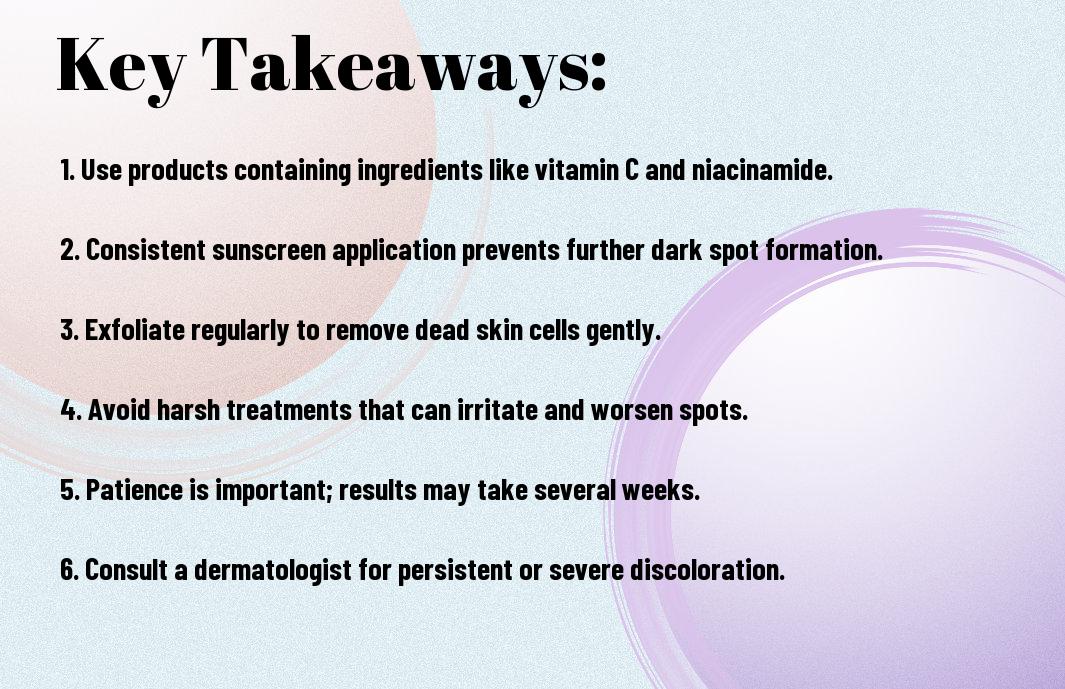
The Science of Hyperpigmentation
The Role of Melanin and Skin Types
Melanin is the pigment responsible for the color of your skin, eyes, and hair. It plays a significant role in how your skin reacts to sunlight and can vary based on your inherent skin type. Individuals with higher melanin levels often have darker skin tones, which can be more prone to certain types of hyperpigmentation. For example, darker skin tones may experience a greater incidence of post-inflammatory hyperpigmentation due to acne or injury. Thou, understanding your skin type allows you to choose targeted solutions.
| Skin Type | Hyperpigmentation Risk |
| Fair Skin | Sunspots |
| Medium Skin | Melasma |
| Olive Skin | Post-inflammatory Hyperpigmentation |
| Dark Skin | All Types |
| Combination Skin | Sunspots and Acne Marks |
Factors Contributing to Dark Spots
Several factors trigger the occurrence of dark spots on your skin, including UV exposure, hormonal changes, and certain medications. Sun exposure significantly increases melanin production, leading to sunspots. Additionally, hormonal fluctuations—often experienced during pregnancy or with certain contraceptives—can lead to melasma. Any where you find dark spots, identifying these triggers can better inform your skincare regimen.
- UV rays – A primary cause of increased melanin
- Hormones – Contributing to melasma
- Medication – Certain medications may increase pigmentation
- Skin Trauma – Irritation from acne or injuries can lead to post-inflammatory hyperpigmentation
- Genetics – Family history can influence dark spot development
Various factors can lead to dark spots. UV rays increase melanin production, easily resulting in sunspots on exposed areas. Hormonal changes may trigger melasma, which disproportionately affects women during pregnancy. Certain medications can heighten skin pigmentation, while injuries or inflammatory conditions often result in post-inflammatory hyperpigmentation. Any individual experiencing dark spots should assess these potential contributors for effective treatment strategies.
- Climate – Sun exposure varies by region
- Skin Products – The wrong products can irritate skin
- Diet – Nutrient deficiencies can affect pigmentation
- Health Conditions – Disorders like Cushing’s can affect melanin
- Age – Aging skin is more susceptible to dark spots
The Ingredients that Deliver Results
Vitamin C: Brightening Superhero
Vitamin C stands out as a powerful antioxidant that brightens the skin and evens out skin tone. It works by inhibiting melanin production, which is vital for tackling dark spots effectively. Incorporating a vitamin C serum into your morning routine can provide not only an instant glow but also long-term brighten effects, making it a key player in your quest for radiant skin.
Retinoids: The Anti-Aging Ally
Retinoids are derived from vitamin A and are well-known for their ability to accelerate cell turnover, which helps fade dark spots over time. More than just a spot-fighting ingredient, retinoids also stimulate collagen production, reducing the appearance of fine lines and improving overall skin texture.
When using retinoids, I recommend starting gradually to allow your skin to adjust. Many users notice visible improvements in skin tone and texture within 12 weeks. For best results, choose a product with a concentration of 0.5% or higher, and pair it with a quality moisturizer to mitigate potential irritation.
Chemical Exfoliants: Unveiling Fresh Skin
Chemical exfoliants, such as alpha hydroxy acids (AHAs) and beta hydroxy acids (BHAs), are instrumental in sloughing away dead skin cells, revealing brighter skin beneath. These acids dissolve the bonds that hold the outer layer of skin together, which not only enhances product absorption but also diminishes the visibility of dark spots over time.
Incorporating chemical exfoliants into your skincare regimen offers a dual benefit. AHAs are particularly adept at improving skin texture and hydration, while BHAs penetrate deeper into the pores, making them perfect for treating acne-prone skin. Regular use, ideally 2-3 times a week, can significantly enhance your skin’s clarity and reduce dark spots effectively.
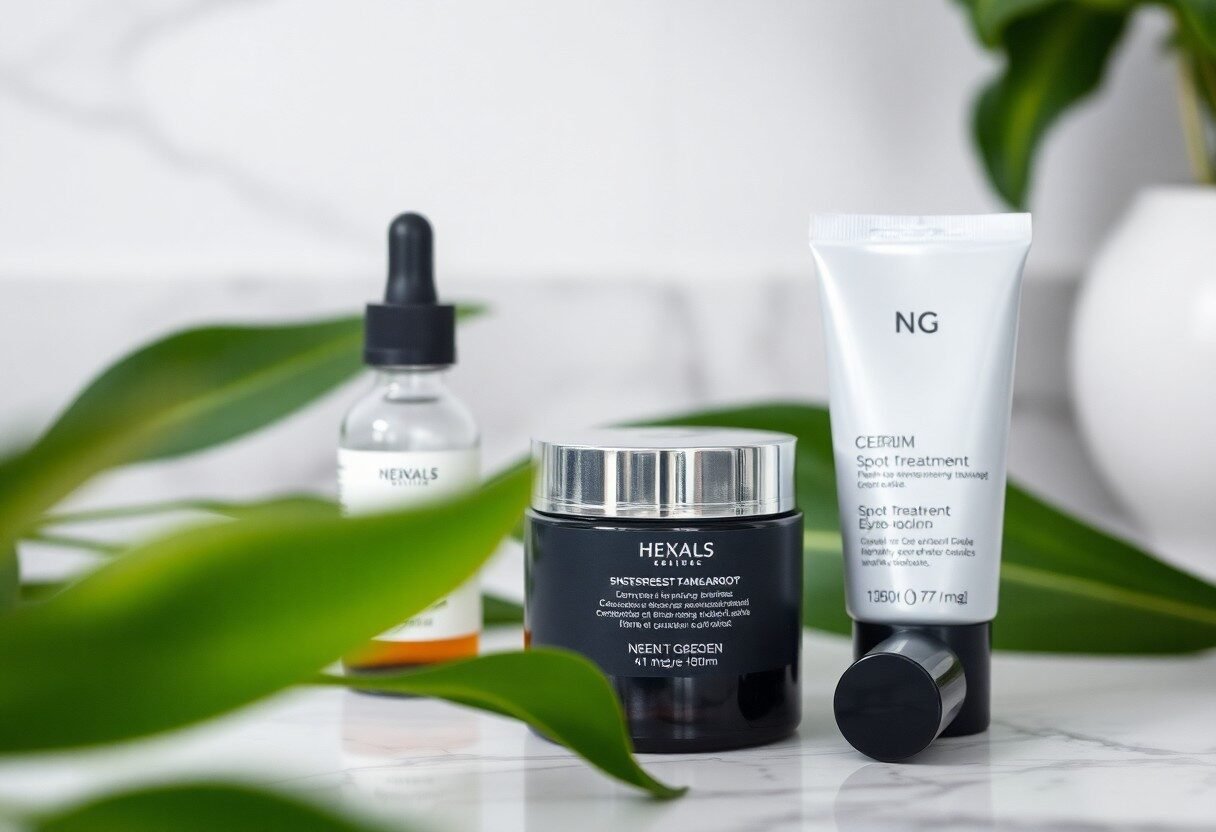
Targeted Treatments for Optimal Impact
Serums that Pack a Punch
In terms of addressing dark spots, serums formulated with potent ingredients can be game-changers. Look for products containing niacinamide, which works to reduce the appearance of pigmentation while also improving overall skin texture. Pairing it with retinol not only enhances cell turnover but also helps in fading those stubborn spots over time. The lightweight consistency of serums allows for deep penetration, enabling these actives to work effectively.
Spot Treatments: Precision Solutions
Spot treatments allow you to target specific areas with precision. Products infused with strong actives like hydroquinone, azelaic acid, or salicylic acid offer a direct approach to reducing hyperpigmentation. These specialized formulations contain higher concentrations that can address dark spots and blemishes more intensely than standard moisturizers or serums.
These targeted solutions are designed for immediate application on affected areas, allowing you to bypass the surrounding healthy skin. For best results, apply them directly to clean, dry skin after your regular cleansing routine. Make sure to assess your skin’s tolerance, especially when employing strong ingredients like hydroquinone, which should be used sparingly at first to gauge its effects.
The Role of Sunscreen in Prevention
Sunscreen is your best friend in the fight against dark spots, acting as both a protective barrier and a preventative measure. Applying a broad-spectrum SPF 30 or higher daily can help shield your skin from the harmful UV rays that trigger melanin production. It’s not just about sunny days; even cloud coverage can allow UV rays to penetrate your skin.
Reapplication is vital, especially if you’re outdoors for extended periods. Resistance to sun exposure fundamentally supports your efforts in treating existing dark spots and, effectively, prevents new ones from forming. Formulating a daily habit, including SPF in your skincare routine, helps create a long-term shield against hyperpigmentation.
The Power of Consistency: Building a Routine
Day vs. Night Skincare: Timing Matters
Day and night skincare routines serve different purposes, making timing fundamental to your approach. During the day, UV protection and hydration are key, while at night, your skin undergoes repair and regeneration. Incorporating topical agents like retinoids can be more effective at night when your skin can fully absorb them without the interference of sunlight. This distinction helps maximize the benefits of each product.
Layering Products for Maximum Efficacy
Efficient skincare layering can transform your routine and enhance product absorption. I prioritize applying lighter serums first and follow with heavier creams. This method not only prevents pilling but also allows each product to penetrate effectively, maximizing their benefits.
For example, after cleansing, I start with a hydrating essence, followed by a vitamin C serum to target dark spots, and finish with a cream containing hyaluronic acid. This systematic approach ensures that every active ingredient has its chance to work. By allowing each layer to absorb for a minute or two before applying the next, you create a synergy between products, optimizing their ability to tackle hyperpigmentation and nourish your skin. Consistency over time with this method yields visible results, allowing you to reclaim your skin’s natural glow.
Common Myths That Mislead
All Natural Means No Harm
Many people believe that “all-natural” products are entirely safe and free from side effects. This notion can be misleading; some natural ingredients can still cause irritation or allergic reactions. For instance, vital oils, often touted for their benefits, can trigger sensitivities in certain individuals. It’s vital to evaluate each product on its own merits, regardless of the label, to avoid harmful reactions while treating dark spots.
Only the Expensive Products Work
There’s a pervasive belief that higher price tags equate to better results in skincare. Many might assume that expensive products offer superior formulations, but that isn’t always the case. Several effective products at the drugstore are packed with active ingredients that can tackle dark spots without breaking the bank.
For example, a well-formulated $20 serum may contain similar concentrations of proven ingredients like niacinamide or glycolic acid found in a luxury $100 product. Conducting research, reading reviews, and checking ingredient lists can often lead to affordable solutions that yield just as impressive results as their pricier counterparts. I’ve experienced firsthand how a budget-friendly product can deliver results, proving that the price tag doesn’t always guarantee efficacy.
A Holistic Approach: Lifestyle and Its Effects
Nutrition’s Influence on Skin Health
Your diet plays a significant role in how your skin looks and feels. Nutrient-rich foods, particularly those high in antioxidants, vitamins, and healthy fats, can improve skin texture and promote a radiant complexion. For instance, incorporating foods rich in omega-3 fatty acids like salmon or flaxseeds reduces inflammation, while antioxidants found in colorful fruits and vegetables can combat oxidative stress—both of which help diminish the appearance of dark spots.
Stress Management and Skin Appearance
High levels of stress can manifest in your skin, exacerbating existing dark spots and causing new blemishes. When you experience stress, your body releases cortisol, which can increase oil production and lead to breakouts. I’ve noticed that adopting stress reduction techniques can improve not just your emotional well-being but also your skin’s appearance.
Practicing mindfulness, regular meditation, deep-breathing exercises, and even light physical activity like yoga can effectively lower stress levels. A study from the Journal of Investigative Dermatology found that participants who engaged in stress management techniques experienced clearer skin compared to those who did not. By prioritizing stress relief, you not only enhance your mental health but also work towards achieving a clearer, healthier complexion.
Realistic Expectations: Timeline for Results
Understanding the Skin Renewal Cycle
The skin undergoes a natural renewal cycle, typically lasting about 28 to 40 days for most adults. During this period, skin cells die, slough off, and are replaced by fresh cells from deeper layers. This cycle means that the effectiveness of any new skincare regimen targeting dark spots won’t be visible overnight. Generally, I’ve seen initial improvements within 4 to 6 weeks, but complete results could take several months of consistent use. Patience is key as your skin gradually reveals an even-toned complexion.
When to Seek Professional Dermatological Help
If you’ve been using over-the-counter products for several months with little to no improvement, it may be time to consult a dermatologist. Certain dark spots can be stubborn or linked to underlying issues that require specialized treatment. Persistent discoloration, particularly if new spots appear, warrants professional advice to rule out conditions like melasma or skin cancer.
Consulting a dermatologist can provide targeted treatments such as chemical peels, laser therapy, or prescription-strength creams that surpass what’s available over the counter. Dermatologists can also recommend personalized regimens based on your skin type and concerns. Don’t hesitate to seek their expertise if you feel unsure about the changes in your skin or the products you’re using. Your skin deserves the best care, and a professional’s insight can be invaluable in your journey to clearer, healthier skin.
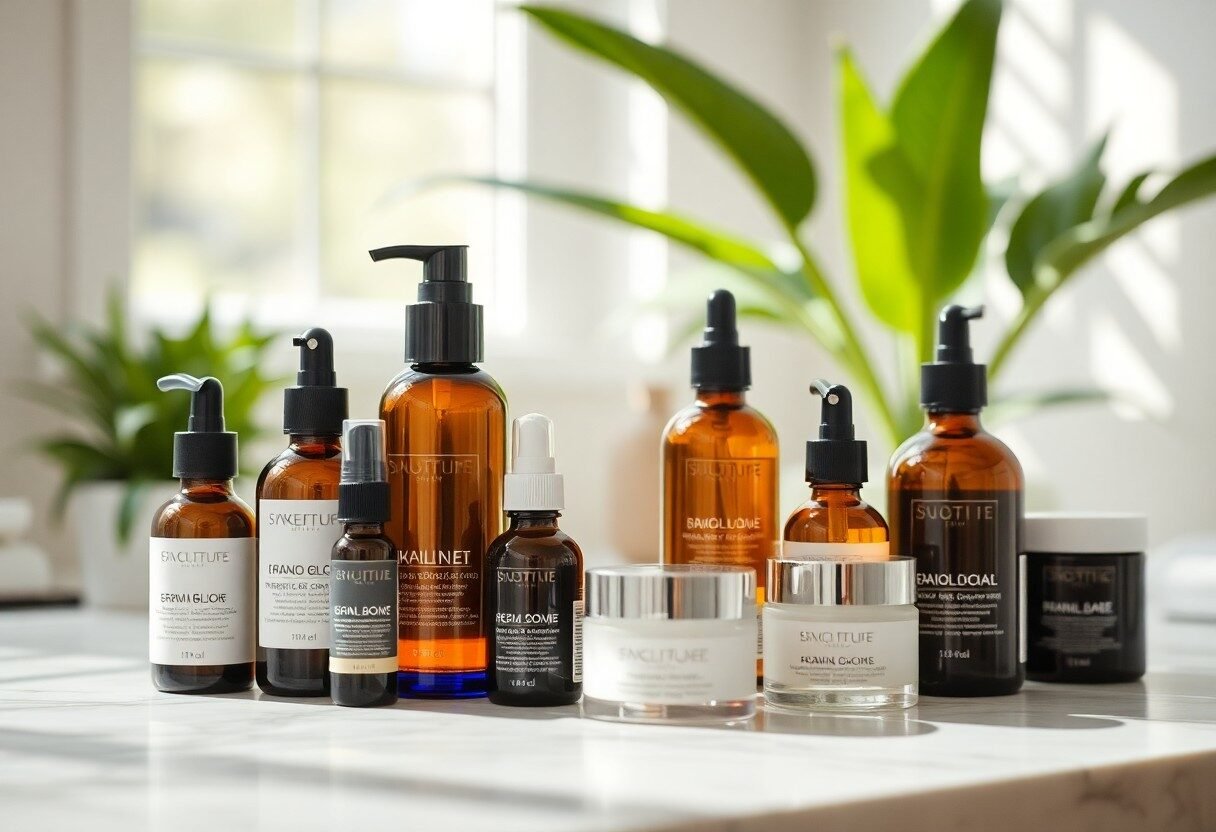
Expert Insights: What Dermatologists Recommend
Professional Treatments vs. At-Home Solutions
For those struggling with stubborn dark spots, the debate between professional treatments and at-home solutions often arises. Dermatologists frequently recommend options like chemical peels, laser therapy, and microdermabrasion, as these can provide quicker and more pronounced results compared to over-the-counter products. However, at-home solutions utilizing ingredients like retinol and hydroquinone can also be effective for mild cases and maintenance, creating a synergistic approach to skin health and spot reduction.
Customizing Skincare for Individual Needs
Your skin isn’t the same as anyone else’s, and tailor-made solutions can enhance your journey in tackling dark spots. A consultation with a dermatologist can help identify your unique skin type and the specific factors contributing to hyperpigmentation. For example, while someone with oily skin may benefit from lightweight formulas, dry skin types might require more hydrating treatments enriched with emollients. The result is a personalized regimen designed to tackle your skin’s unique challenges.
Understanding your skin’s needs extends beyond basic type classification. Environmental factors such as sun exposure, hormonal changes, and even medication can influence how your skin responds to treatments. In my experience working with various clients, I’ve seen that a combination of professional assessments and DIY adjustments leads to the best results. Using targeted serums with niacinamide for redness or kojic acid for pigmentation can dramatically enhance your results, allowing each individual to achieve their skincare goals in a sustainable way.
Conclusion
On the whole, tackling dark spots effectively requires the right combination of skincare products tailored to your unique skin needs. I encourage you to explore options like vitamin C serums, retinoids, and exfoliating acids, which have proven beneficial for many. Incorporating these targeted treatments along with wearing sunscreen can significantly improve your skin’s appearance. By staying consistent with your routine and being patient, you can achieve a more even complexion and boost your confidence in your skin.
FAQ
Q: What are dark spots, and what causes them?
A: Dark spots, also known as hyperpigmentation, are areas of skin that become darker than the surrounding skin due to an excess production of melanin. Common causes include sun exposure, hormonal changes, acne scars, and certain medications. Understanding the underlying cause is crucial in selecting the appropriate skincare products for treatment.
Q: Which ingredients should I look for in skincare products to combat dark spots?
A: Effective ingredients for treating dark spots include Vitamin C, retinoids, niacinamide, azelaic acid, and hydroquinone. Vitamin C brightens the skin and protects against free radicals, while retinoids promote cell turnover. Niacinamide evens skin tone, azelaic acid reduces redness, and hydroquinone fades hyperpigmentation. Always consult a dermatologist for personalized recommendations.
Q: How long will it take to see results from products targeting dark spots?
A: The time frame to see improvement varies depending on the individual, the products used, and the severity of the dark spots. Generally, you may start to notice results within 4 to 12 weeks of consistent use, although more significant changes could take several months. Regular use of sunscreen is also crucial to prevent further darkening.
Q: Can I use multiple products containing different active ingredients for dark spots?
A: Yes, layering different products can enhance the effectiveness of your skincare routine. However, combine them thoughtfully to avoid irritation. Start with a gentle daily routine and gradually incorporate new products. It’s wise to consult a dermatologist to identify which combinations are safe and effective.
Q: Is it safe to use brightening products during the daytime?
A: Many brightening products can make your skin more sensitive to sunlight, increasing the risk of further pigmentation. If you choose to use these products during the day, apply a broad-spectrum sunscreen with SPF 30 or higher to protect against UV rays. Alternatively, consider using them as part of your nighttime routine.
Q: Are there any lifestyle changes that can help reduce dark spots?
A: Yes! Incorporating a healthy diet rich in antioxidants, staying hydrated, and avoiding excessive sun exposure can help. Additionally, quitting smoking and managing stress levels can contribute to overall skin health and reduce the appearance of dark spots. Regularly using sunscreen will also protect your skin from UV damage, preventing further darkening.
Q: When should I consult a dermatologist regarding dark spots?
A: If over-the-counter products do not show improvement within a few months, or if you notice rapid changes in your skin, it’s advisable to consult a dermatologist. They can provide specialized treatments and guidance tailored to your skin type and concerns, ensuring safer and more effective results.



